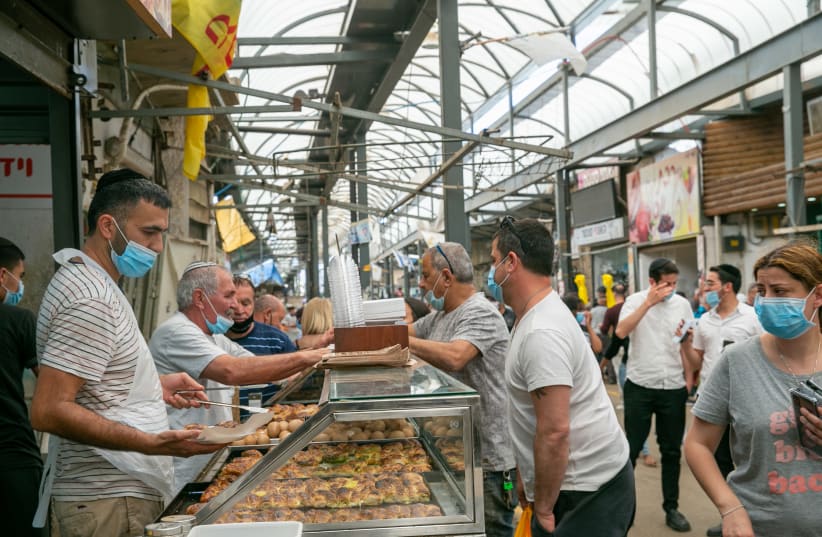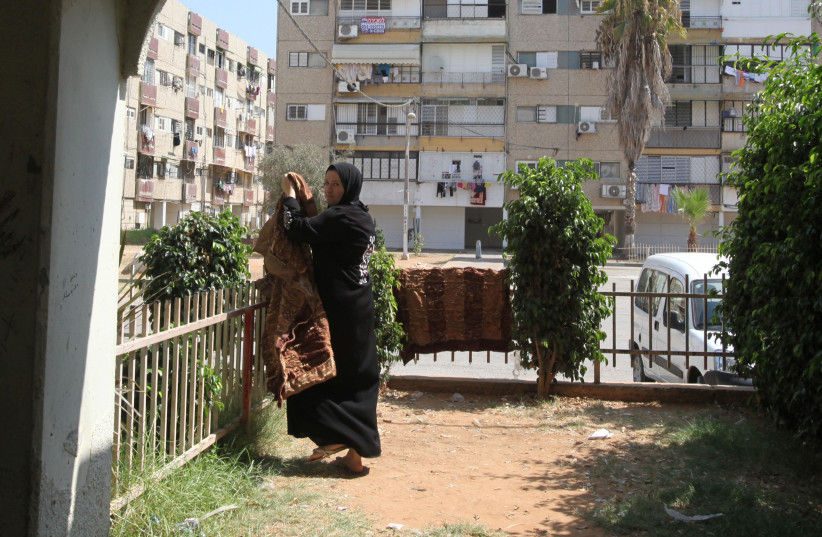Israeli Jews tend to live in areas associated with higher socioeconomic status compared to their Arab peers, according to a newly-released study from the Taub Center for Social Policy Studies in Israel.
The study was conducted by Prof. Benjamin Bental and Dr. Labib Shami.
The researchers evaluated migration within Israel between 2017-2020, focusing on eight mixed Arab-Israeli and Jewish-Israeli cities: Lod, Jerusalem, Ramle, Acre, Haifa, Ma'alot Tarshiha, Nof Hagalil and Tel Aviv-Jaffa.
They examined two types of migration patterns: "internal" and "external." Internal migration was defined as moving from one home to another within the same city; external migration, on the other hand, is moving from one city to another.
Growth and wealth status
The Arab populations in Jerusalem and Ramle grew between 2017-2020, while in Lod the Jewish population grew. External migration into Nof Hagalil increased the city's Arab population by an average of 4.5% annually.
In most of these mixed cities, the Jewish residents lived in clusters of higher socioeconomic levels than the Arab residents. The exception to this was Nof Hagalil, in which there is a far less pronounced socioeconomic difference between the two populations, and researchers' projections suggest the city's overall socioeconomic ranking will improve in the near future.
Nof Hagalil also stood out, along with Malalot Tarshiha, for the fact that its residents almost exclusively belonged to the middle socioeconomic classes. Ramle, Lod and Acre lacked residents in the higher socioeconomic clusters only.
Tel Aviv-Jaffa and Haifa
Tel Aviv-Jaffa and Haifa, approximately 68% and 42% of Jews respectively live in more wealthy areas while only 11% of Arabs do. In Jerusalem, findings were similar but less drastic as 71% of all Jerusalem residents lived in areas designated to be lower-middle or low socioeconomic status. What is more - since 2020 the city has only become poorer, said researchers. Lod painted a similar picture to Jerusalem.
"The findings of the study clearly show that the majority of the Arab residents in the mixed cities are concentrated in areas belonging to lower clusters than the Jewish residents. In Haifa and Tel Aviv-Jaffa, the disparities are particularly noticeable: about 73% and about 82% [respectively] of the Arabs live in the lower cluster areas, compared to the Jewish residents," said Dr. Labib Shami.
The rate of external migration of Arabs to and from Jerusalem was found to be quite low compared to Jews, while opposing migration trends of Jews and Arabs in Haifa, Nof Hagalil and Acre resulted in an increase in the Arab population.
In Jerusalem, Ramle and Tel Aviv-Jaffa, the rate of external migration for both populations into the cities is low, resulting in an annual decrease in overall population each year.
Internal migration
In terms of internal migration, researchers found that Nof Hagalil, Acre, Ramle and Lod are on track to bolster their overall socioeconomic status.
"The trends of internal migration within the cities reflect changes in the economic situation of their residents. In Nof Hagalil, both Arabs and Jews are moving from [less wealthy] areas to [wealthy] areas - a process that may lead to an improvement in the socioeconomic status of the city in the future," concluded Prof. Benjamin Bental.

